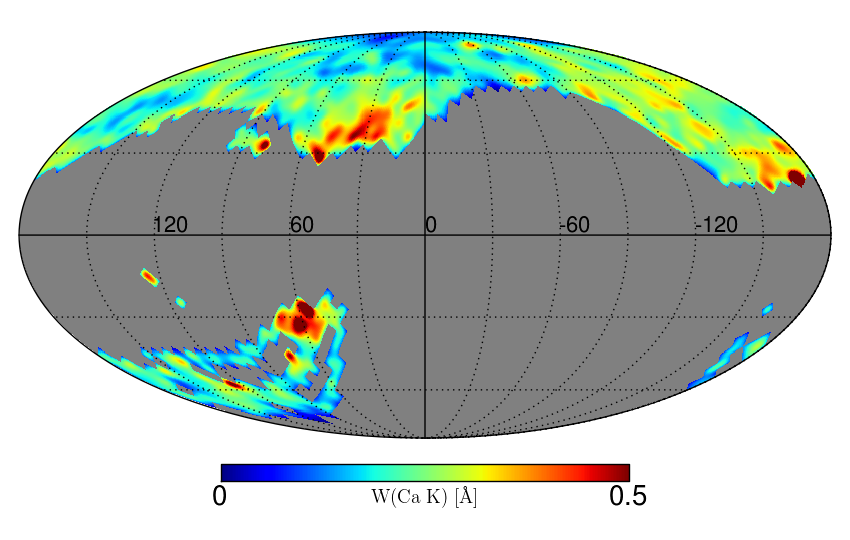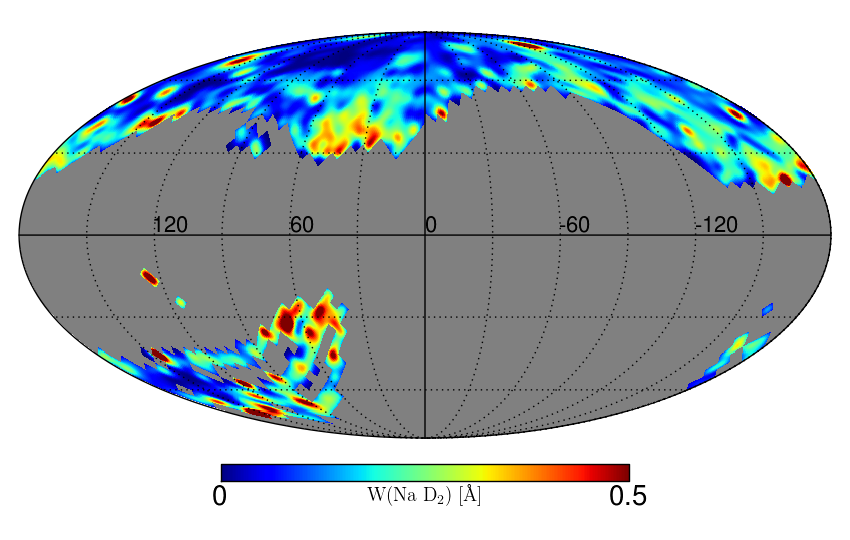Calcium/Sodium in the Milky Way
Together with Guangtun Zhu, Brice Ménard and Ting-Wen Lan (Johns Hopkins University, Baltimore, USA)
|
We map out calcium II & sodium I absorption - corresponding to Fraunhofer H, K & D lines - induced by both the interstellar medium and the circumgalactic medium of the Milky Way. Our measurements cover more than 9000 deg2 and make use of about 300,000 extragalactic spectra from the Sloan Digital Sky Survey. We present absorption maps for these two species and then compare their distributions to those of atomic hydrogen and dust. We show that the abundance of sodium with respect to neutral hydrogen stays roughly constant in different environments, while that of calcium decreases with column density. Studying how these tracers vary as a function of velocity, we show that, on average, the N(Na I)/N(Ca II) ratio decreases at higher velocity with respect to the local standard of rest, similar to the local Routly-Spitzer effect but seen on a Galactic scale. We show that it is likely caused by higher gas/dust density at lower velocity. Finally, we estimate the effect of Ca II and Na I absorption on precision photometry and caution that cosmological experiments that require precise flux calibration need to take into account the metal absorption effect.
Here we show the maps of calcium and sodium in the Milky Way based on the obtained data.
|

|

|
|
The fits file with data (equivalent widths of Ca H&K and Na D1&D2) can be downloaded here (version from 03/2015). The file is organized as a fits-table with 11 columns: EW(Ca K), EW(Ca H), EW(Na D2), EW(D1), ΔEW(Ca K), ΔEW(Ca H), ΔEW(Na D2), ΔEW(D1), number of stacked spectra in a pixel, longitude and latitude.
|
|
Go to Homepage | About me | CV | Projects |
Publications
|



